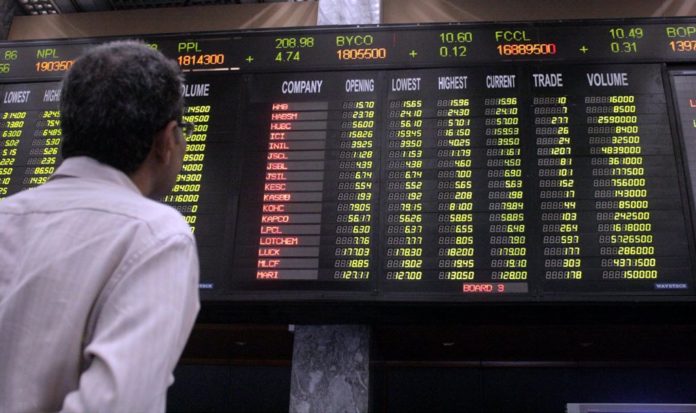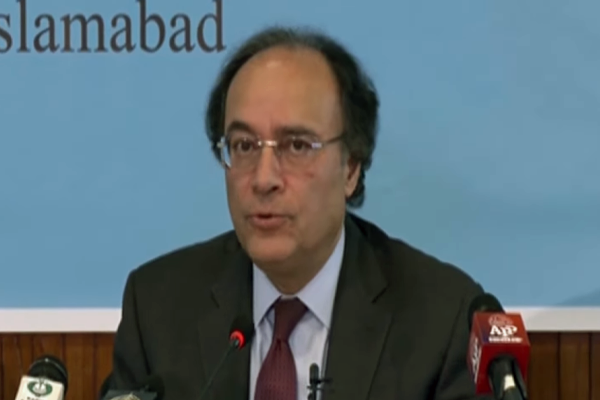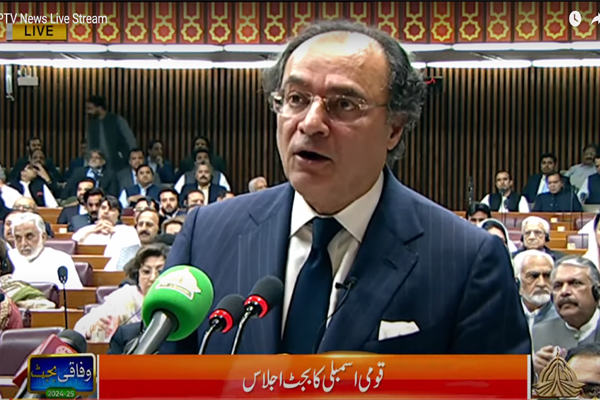PTBP Web Desk
The Pakistan Stock Exchange (PSX) experienced a strong rebound on Friday, with the benchmark KSE-100 Index gaining over 1,500 points during the first half of trading. This recovery came a day after the market witnessed a historic selloff, marking one of the most significant single-day losses in its history.
At 12:00 PM, the KSE-100 Index was trading at 107,843.59 points, reflecting an increase of 1,568.62 points or 1.48%. Buying interest surged across key sectors, including:
- Cement
- Commercial banks
- Fertilizer
- Oil and gas exploration companies
Index-heavy stocks such as MCB Bank, Meezan Bank (MEBL), National Bank of Pakistan (NBP), United Bank Limited (UBL), Oil and Gas Development Company (OGDC), Pakistan Petroleum Limited (PPL), and Hub Power Company (HUBCO) showed positive momentum, trading in the green.
Analysts from Intermarket Securities noted that the recent pullback in the market had created attractive entry points for investors. “The recent market pullback has opened up valuations, creating attractive entry points for investors looking to capitalize on the dip in equities,” stated their report on Friday. This positive sentiment provided much-needed relief following Thursday’s dramatic selloff.
On Thursday, the PSX experienced a massive selloff, with the KSE-100 Index dropping by 4,795 points to close at approximately 106,200 points. This marked a historic single-day loss, attributed primarily to investor concerns over proposed tax amendments by the government. The bill includes increased restrictions on non-filers in areas such as real estate, equity markets, and automobile purchases, which heightened uncertainty among market participants.
The rebound in the PSX coincided with a mixed performance in global markets. Asian shares remained near three-month lows on Friday, reflecting cautious investor sentiment. The MSCI’s broadest index of Asia-Pacific shares outside Japan fell by 0.4% and was on track for a weekly loss of 2.6%. Despite this decline, the index has gained over 8% for the year.
Investors worldwide are closely monitoring the US Core Personal Consumption Expenditures (PCE) inflation data, a key metric influencing monetary policy decisions. Forecasts predict a 0.2% monthly rise in November, with any upward surprises potentially altering expectations for US Federal Reserve rate cuts in 2025. Futures currently imply only 37 basis points of rate reductions, reflecting a cautious outlook following the Fed’s recent hawkish stance.
The sharp recovery on Friday suggests that investor confidence remains resilient despite recent volatility. Key sectors, including cement, banking, and oil and gas exploration, are attracting interest due to their fundamental strengths and valuation potential. This recovery underscores the market’s ability to adapt and presents opportunities for both domestic and international investors.
The proposed tax amendments have raised concerns about their potential impact on market liquidity and investor participation. Analysts warn that increased restrictions on non-filers could deter investment in critical sectors. However, the government’s fiscal policies are aimed at improving revenue collection and addressing economic imbalances.
Globally, markets remain sensitive to inflation trends and central bank policies. Any significant developments in US inflation data or Federal Reserve decisions could influence market sentiment in emerging economies like Pakistan.
For investors, the current market dynamics offer both challenges and opportunities. The significant pullback in equity prices provides an entry point for long-term investments, particularly in fundamentally strong sectors. However, caution is advised given the prevailing uncertainties around domestic fiscal policies and global economic trends.




